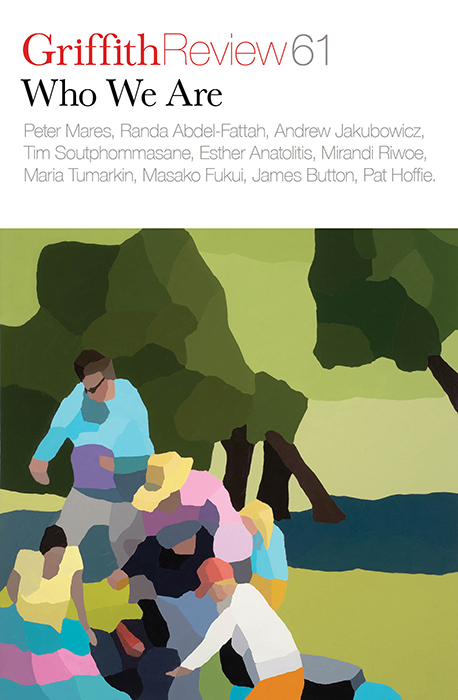Featured in

- Published 20180501
- ISBN: 9781925603323
- Extent: 264pp
- Paperback (234 x 153mm), eBook

Already a subscriber? Sign in here
If you are an educator or student wishing to access content for study purposes please contact us at griffithreview@griffith.edu.au
Share article
More from author

A Christmas story
MemoirJUST AFTER MIDNIGHT, six soldiers were shot in their beds in the Officers’ Quarters on Christmas Island. Their bodies were wrapped in bed sheets...
More from this edition

Re-imagining Parramatta
EssayTHERE ARE JACKHAMMERS everywhere. A new Parramatta is emerging out of the rubble, seeking to make real its tag line: ‘Australia’s next great city’. Thickets...

Homesick
EssayIN THE BEGINNING, I had to avert my eyes – not that he’d asked me to or anything. Sometimes I’d try to make myself look, but...

Sentenced to discrimination
EssayON AUSTRALIA DAY in 2016, artist Elizabeth Close was at an Adelaide shopping centre speaking to her young daughter in Pitjantjatjara, when a woman...